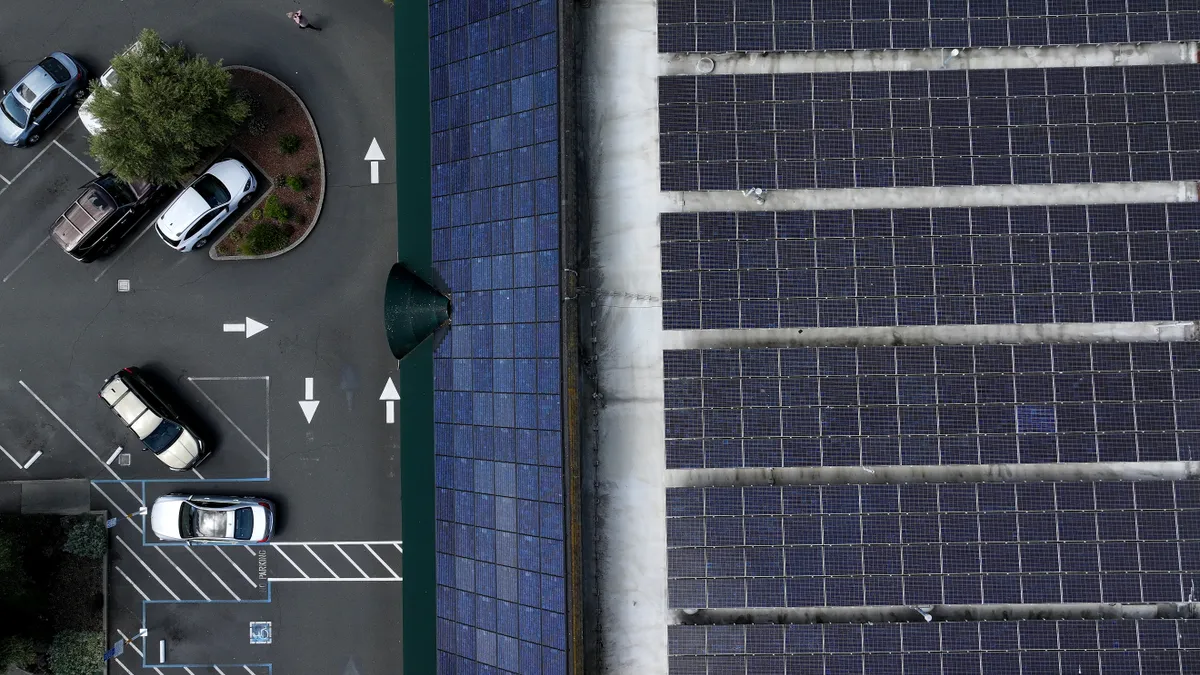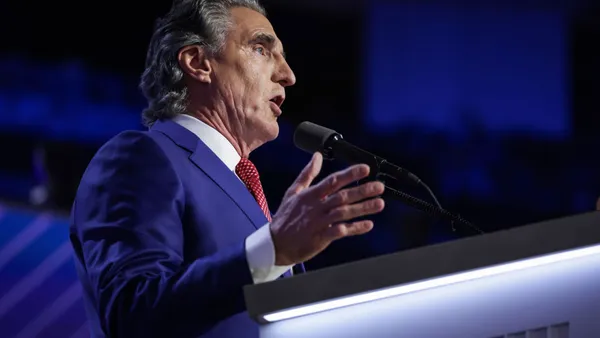Dive Brief:
- The United States will fall "considerably short" of its greenhouse gas emissions goals under the Paris climate accord without the Obama administration's Clean Power Plan, according to a new report from the Rhodium Group.
- Rhodium's new "Taking Stock" report estimates U.S. net GHG emissions will be 15% to 19% lower than 2005 levels by 2025 — significantly off the 28% targeted by the Paris commitment, and well below the Clean Power Plan's goals.
- The EPA is currently considering rolling back or rescinding the Clean Power Plan and the president is expected to announce a final decision on the Paris accord this week. Trump has reportedly told close advisors, including the EPA administrator, that he will pull the U.S. out of the international accord.
Dive Insight:
"What a difference a year makes," Rhodium Group's analysis begins. The firm's annual estimate of U.S. greenhouse gas emissions was last focused on Obama-era policies widely expected to be kept in place, like the Clean Power Plan.
But in the wake of President Trump's surprise election, the firm has removed the CPP from its estimates, and the impact is significant.
By the end of 2016, carbon dioxide emissions from energy consumption were 13.7% below 2005 levels and 17.6% lower than projected by the EIA in 2008, Rhodium notes. But while technology and market forces will help reduce emissions further, rolling back federal rules will slow the decline.
Rhodium's analysis has United States greenhouse gas emissions declining to 15% to 16% below 2005 levels by 2020, but then "emissions then begin to flatten out."
"[A]bsent new policy (whether at the federal or state and local level), the U.S. is on course for a 15% to 19% reduction in GHG emissions by 2025 – considerably short of its 26% to 28% commitment under the Paris Agreement," Rhodium analysts wrote.
Rhodium sees the U.S. missing near-term Paris goals even in the most optimistic of energy market and economic forecasts.
The Clean Power Plan, which focused only on existing power plants, sought to cut carbon from the electric utility sector 32% by 2030. Without it, some coal plants are expected to run more often and stay open longer, raising overall emissions, though utilities are not expected to build new coal plants due to the competitiveness of natural gas generation.
In March, President Trump signed am executive order directing the EPA to review the CPP and other power sector pollution regulations. While it remains to be seen whether the rules are replaced with less-stringent emissions standards or thrown out entirely, a judicial stay on the rule means states do not have to follow its standards while it is under review.
Even with the CPP, analysts say the U.S. was not on track to meet the longer-term goals of the Paris accord, which aims to limit global warming to 2°C this century.
For developed economies, that translates to about an 80% economywide decarbonization by 2050 — a goal scientists say will be difficult if continued investment in natural gas infrastructure inhibits deeper GHG cuts in decades to come.
"Changes in state and local policy either independent of the new administration or in direct response to it, will shape future US emissions, as will the outcome of the 2020 Presidential election," according to the Rhodium report. "But the forecasts presented here provide a useful signpost for where the U.S. is headed as of today, and how much work remains to be done."














